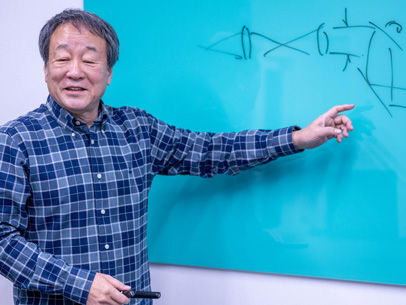
Last month I wrote about the Optica 2022 Leadership Conference in Washington, DC, USA, where I had the opportunity to talk with attendees both in a plenary speech and during meetings and receptions. In the course of those interactions I often asked attendees why they were there as optics/photonics scientists or engineers. Of course, all of us belong to Optica because we work in or for the field of optics and photonics. But just why we entered this field is different for each of us—by chance for some, by genetic predisposition for others, by education for still others.
To be honest, I had hoped to be free from studies once I graduated from college. When I was a student, however, the university campus was in chaos due to the student movement against the university, the government and the war in Vietnam. It was not an environment where I could concentrate on science, and I decided I wanted to study more and went on to graduate school rather than finding a job.
I chose optics as my research topic because I found artistry in it. When I observed living organisms and inorganic natural objects through a microscope, the images I saw were beautiful and fascinating—works of art in themselves. The colors of light from helium–neon lasers and argon ion lasers were beautiful and pure.
As an optical scientist, I started by solving the inverse problem of recovering the original object from an image observed through an optical system (so-called mathematical super-resolution). I also developed optical methods (tomography) to recover a 3D object from multiple 2D images. And then I moved to topics in nanophotonics, including invention and patenting of a near-field optical-scanning microscope that uses metallic (plasmonic) nano-probes. This nano-resolution microscope is now widely known as a tip-enhanced Raman scattering (TERS) microscope.
One of my research topics that has caught people’s attention is using two-photon polymerization to form 3D nanostructures. The method was able to produce a sculpture of a bull whose dimensions are 3 million times smaller than those of the natural animal. (This object, published in Nature, earned a listing in the “science” category of the Guinness Book of World Records as the “World’s smallest three-dimensional sculpture made with a laser.”)
Perhaps people were attracted to the fact that an artistic model of a bull—which is not a robot, but a creation of God—could be made using nanotechnology. Ten years later, I proposed 3D, plasmonic-based color holography and published, in Science, a photograph and video showing a red apple with a green leaf floating in 3D space. The color and shape of the apple, a natural form, are more artistic than man-made objects such as cars and houses.
Just as such artistic possibilities were one attraction that drew me (and perhaps others) to optical science, so also many visual artists find the possibilities of light, optical materials and optical phenomena a source of inspiration. The cover story of this issue of Optics & Photonics News profiles eight contemporary artists who have found their own way of bringing optics and art together.
Creating science is akin to creating works of art. And both are the work of human beings.
I would welcome your thoughts on this message or other topics at ideas@optica.org.
—Satoshi Kawata,
Optica President
